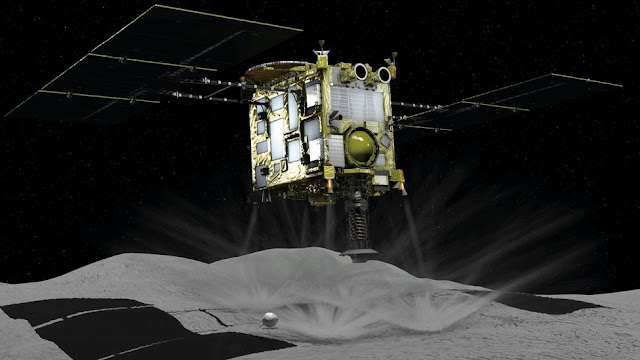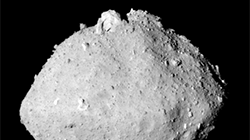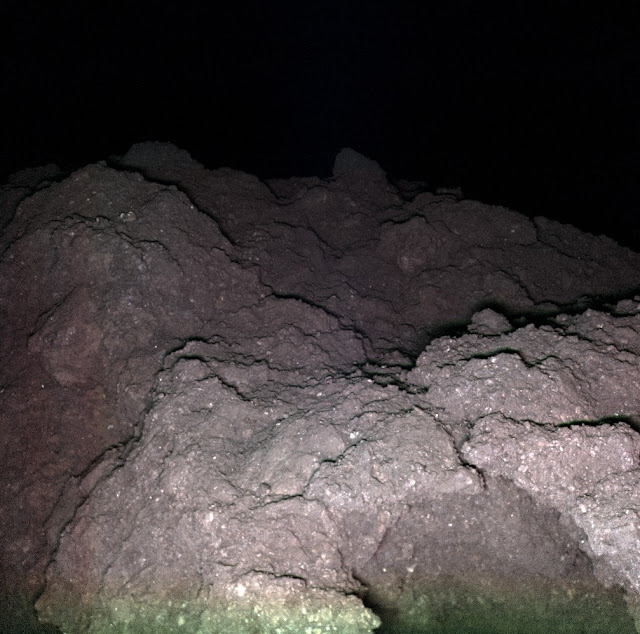A Spacecraft Landed On A Massive Space Rock And Made Incredible Discoveries
The Japanese Space Agency JAXA launched the Hayabusa 2 mission in 2014 to visit the asteroid Ryugu. It landed on the asteroid in June 2018 and spent nearly a year studying it from orbit. Hayabusa 2 even sent four rovers to the surface of the asteroid. Following its departure, it swung by Earth in December 2020, sending down a sample of Ryugu.

The most intriguing scientific discovery from that outstanding journey is this: Asteroid Ryugu may not be an asteroid. It might be the remains of a comet.
According to the Hayabusa 2 mission, asteroid Ryugu is a rubble pile asteroid. It is a cluster of tiny boulders rather than a single big, monolithic block of rock. It’s formed like a spinning top, like certain other asteroids. The fast-spinning of the asteroid shaped it into this form.
The authors of the research say that “A widely accepted formation scenario for Ryugu is a catastrophic collision between larger asteroids and the subsequent slow gravitational accumulation of collisional debris.”

A large portion of the information from c supported the assumption that Ryugu is an asteroid, which astronomers had believed since its detection in 1999. Among the findings that did not meet the asteroid description, one thing stuck out: Ryugu had a significant concentration of organic matter.
Why does Ryugu contain so much concentrated organic matter if it is a debris pile asteroid formed by the collision of two smaller asteroids?

This is the central subject in recent research published in The Astronomical Journal Letters titled “The Asteroid 162173 Ryugu: a Cometary Origin.” Associate Professor Hitoshi Miura of Nagoya City University is the main author.
The scientists speculate in their research that not only may Ryugu be a comet remnant, but that comparable rubble-pile asteroid could also be former comets. These are known as Comet Asteroid Transition (CAT) objects by astronomers.
So, in short, the new research, based on results from Japan’s Hayabusa2 mission, proposes that the 0.5-mile-wide (0.8-kilometer) asteroid is really the stony remnants of a dead comet that was smooshed together by its own gravity after losing its ice.
Reference(s): The Astrophysical Journal Letters, Eurekalert
Do not forget to share your opinion with us to provide you with the best posts !



0 Comments